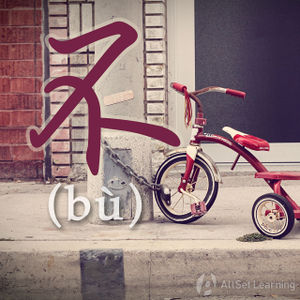Difference between revisions of "Tag questions with "bu""
| Line 37: | Line 37: | ||
[[Category:A1 grammar points]] | [[Category:A1 grammar points]] | ||
{{Used for|Asking questions}} | {{Used for|Asking questions}} | ||
| + | {{Used for|Giving alternatives}} | ||
{{Basic Grammar|不|A1|⋯是不是?, 对不对?, ⋯好不好?|我们 喝 茶 , <em>好 不 好</em> ?|grammar point|ASG4D8XB}} | {{Basic Grammar|不|A1|⋯是不是?, 对不对?, ⋯好不好?|我们 喝 茶 , <em>好 不 好</em> ?|grammar point|ASG4D8XB}} | ||
{{Rel char|好}} | {{Rel char|好}} | ||
Revision as of 09:12, 24 July 2013
-
Level
-
Similar to
-
Used for
-
Keywords
As well as tag questions with ma, tag questions can also be formed using 不 (bù). This is done with a positive negative question.
Structure
Verb + 不 + Verb
This can then be attached to the end of a sentence to form a tag question. Tag questions seek confirmation or acceptance of what has been said. In English, "right?" and "OK?" are often used as tag questions.
Examples
- 咱们 去 咖啡 店, 好不好 ?Let's go to the cafe, OK?
- 我们 喝 茶, 好不好 ?Let's have tea, OK?
- 他 是 你 的 老板, 对不对 ?He's your boss, right?
- 你 姓 王, 是不是 ?Your last name is Wang, is it not?
See also
Sources and Further Reading
Books
- Integrated Chinese: Level 1, Part 2 (1st ed) (pp. 85-86) →buy
- New Practical Chinese Reader 1 (新实用汉语课本1)(2nd ed) (pp. 218) →buy



